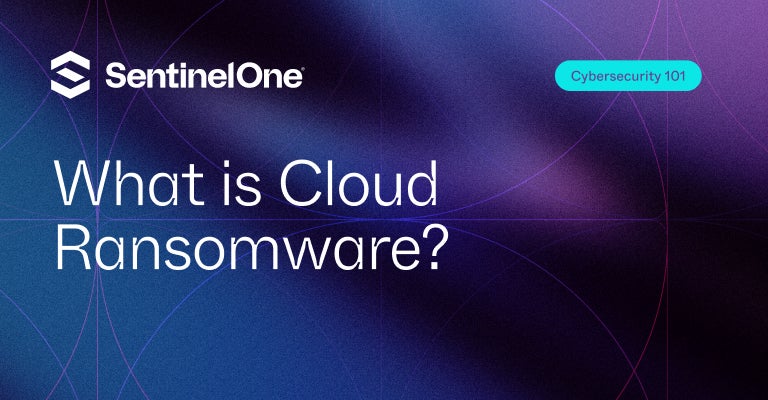Cloud ransomware poses a growing threat to businesses of all sizes. Our guide delves into the inner workings of this insidious malware, equipping you with the knowledge to identify, prevent, and respond to ransomware attacks targeting your cloud infrastructure. Learn about the latest ransomware tactics, the importance of cloud backups, and proven mitigation strategies that will keep your data safe and your business running smoothly. Stay ahead of the curve and protect your cloud assets with our expert insights.

What is Cloud Ransomware?
Cloud ransomware is a type of malware that infiltrates cloud-based systems and encrypts data, rendering it inaccessible to users. The attackers then demand a ransom, typically in the form of cryptocurrencies like Bitcoin, to decrypt and release the affected data. The shift to cloud computing has made this an increasingly prevalent threat, as businesses move more of their data and operations to cloud-based services.
How Does Cloud Ransomware Work?
Cloud ransomware exploits vulnerabilities in cloud services, applications, and infrastructure to gain unauthorized access to data. Once inside, it encrypts files and folders, leaving the victim with limited options for recovery. The attackers may also threaten to publish or sell sensitive data if the ransom is not paid, adding further pressure to comply with their demands.
The Rise of Cloud Ransomware
The increasing reliance on cloud services has created new opportunities for cybercriminals to exploit. With businesses storing more sensitive data in the cloud, attackers can target a larger pool of valuable information. This trend, combined with the ease of deployment and potential for high financial gain, has made cloud ransomware an attractive option for cybercriminals. Additionally, the relative anonymity provided by cryptocurrencies has made it easier for attackers to demand and receive ransoms without being traced.
Best Practices for Protecting Against Cloud Ransomware
To protect your organization from cloud ransomware, adopting a proactive approach to cybersecurity is crucial. Below are some best practices to help you safeguard your cloud environment:
- Regularly Backup Your Data: Implement a robust backup strategy, including off-site and offline backups, to ensure you can quickly restore your data if it’s compromised.
- Update and Patch Software: Keep your cloud applications, services, and infrastructure updated with the latest security patches to minimize vulnerabilities that ransomware can exploit.
- Implement Multi-Factor Authentication (MFA): MFA adds an extra layer of security by requiring multiple forms of verification before granting access to cloud accounts and services.
- Employee Training and Awareness: Educate your staff on the risks associated with cloud ransomware and the importance of following security best practices.
- Monitor and Detect Threats: Use advanced threat detection tools like SentinelOne’s ActiveEDR to monitor your cloud environment for suspicious activity and respond to threats in real-time.
- Control Access: Implement least privilege access policies, ensuring that users have access only to the resources necessary for their job functions.
- Encrypt Sensitive Data: By encrypting sensitive data, even if attackers manage to breach your cloud environment, they won’t be able to access the information without the decryption key.
- Develop an Incident Response Plan: Create a comprehensive incident response plan that outlines how your organization will respond to a cloud ransomware attack, including roles, responsibilities, and communication protocols.
- Regularly Assess Cloud Security: Conduct routine audits of your cloud environment to identify potential vulnerabilities and ensure your security measures are effective.
- Partner with a Managed Security Services Provider (MSSP): An MSSP offers expertise in cybersecurity and can help you stay ahead of emerging threats like cloud ransomware. Explore SentinelOne’s Managed Detection and Response for more information.
SentinelOne: Strengthening Your Defense Against Cloud Ransomware
SentinelOne is a leader in providing advanced cybersecurity solutions designed to help organizations protect their cloud environments from ransomware and other threats. The SentinelOne platform offers a range of features and capabilities, including:
- Autonomous AI: SentinelOne’s AI-driven technology can detect and respond to threats in real-time, ensuring your cloud environment remains secure.
- Endpoint Protection: SentinelOne’s endpoint protection solution safeguards devices accessing your cloud services, reducing the risk of ransomware infection.
- Network Visibility: Gain complete visibility into your network traffic to identify potential threats and monitor the security of your cloud environment.
- Threat Hunting: Proactively search for signs of compromise and potential threats in your cloud infrastructure before they can cause damage.
- IoT and OT Security: Secure your Internet of Things (IoT) and Operational Technology (OT) devices that connect to your cloud services, reducing the risk of ransomware attacks targeting these often-overlooked entry points.
Conclusion
Cloud ransomware is a growing threat that organizations must proactively address to safeguard their critical data and infrastructure. By implementing best practices, leveraging advanced cybersecurity solutions like those offered by SentinelOne, and staying informed about the latest threats and trends, you can better protect your organization from the potentially devastating impact of cloud ransomware.
Stay ahead of the evolving threat landscape by exploring additional resources and insights on SentinelOne.com. Equip your organization with the knowledge and tools necessary to defend against cloud ransomware and other emerging cybersecurity challenges.